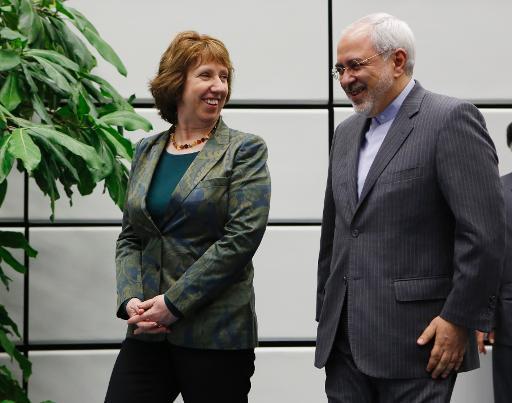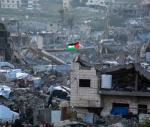You are here
US warns on Iran ‘breakout’ capability as nuclear talks start
By Reuters - Apr 08,2014 - Last updated at Apr 08,2014
VIENNA — The United States said on Tuesday Iran has the ability to produce fissile material for a nuclear bomb in two months, if it so decided, as Tehran and six world powers swung into a new round of talks in Vienna on resolving their atomic dispute.
Secretary of State John Kerry’s comments in Washington highlighted Western concerns about Iran’s nuclear intentions and the wide divisions between the two sides that could still foil a deal. Iran says its nuclear programme is entirely peaceful.
The overarching goal of the powers — Britain, France, China, Russia, Germany and the United States — in the talks is to persuade Iran to scale back its programme to the point that it would take it much longer, perhaps as much as a year, to produce fuel for a bomb if it chose to do so.
“I think it’s public knowledge today that we’re operating with a time period for a so-called ‘break-out’ of about two months. That’s been in the public domain,” Kerry testified at a Senate hearing.
Iran’s “break-out” time is defined as how long it would take it to produce fissile material for one nuclear weapon, if it decided to build such weapons of mass destruction.
To lengthen this potential timeline, the powers want Iran to cut back the number of centrifuges it operates refine uranium and the overall amount of enriched uranium it produces, as well as to limit its research into new technologies and submit to invasive inspections by the United Nations’ nuclear watchdog.
The Islamic Republic says its nuclear fuel-making activity is only for peaceful purposes such as electricity generation, and it wants the West to lift crippling economic sanctions as part of any final accord with the powers.
The February 8-9 round is the third meeting between the powers and Iran since February, and part of a series which they hope will culminate in a broad settlement of the decade-old nuclear dispute that threatens to sink the Middle East into a new war.
The meetings so far have been used by the sides largely as an opportunity to spell out their positions on issues such as the scope of Iran’s uranium enrichment efforts, its contested nuclear facilities, rather than to narrow their differences.
“We are involved in very detailed and substantial negotiations and we are trying as hard as we can to drive the process forward,” the spokesman for European Union foreign policy chief Catherine Ashton, who coordinates the discussions on behalf of the powers, told reporters.
Getting into the details
Both sides say they want to start drafting a comprehensive agreement in May, some two months before a July 20 deadline for finalising the accord.
“What matters most to us is that there is a good agreement. Clearly we want to make progress as fast as possible but the most important thing is the quality of the agreement,” Ashton’s spokesman, Michael Mann, said.
“It has to be a good agreement that everyone is happy with. So we will work as hard was we can to achieve that.”
Iranian and US negotiators are wary that any deal will face criticism from conservative hardliners at home wedded to confrontation since Iran’s 1979 Islamic Revolution.
The six nations have agreed internally to have a draft text of an accord by the end of May or early June, one diplomat from the powers said. But he added: “We’re still in an exploratory phase... In the end, things will happen in July.”
Tuesday’s opening session was chaired by Ashton and Iranian Foreign Minister Mohammad Javad Zarif, but their deputies later took over.
The diplomat said issues to be discussed included how UN nuclear inspectors would verify whether Iran was meeting its end of any deal, suspected past atomic bomb research by Tehran and how to deal with UN Security Council resolutions on Iran adopted since 2006.
A senior Iranian negotiator, Deputy Foreign Minister Abbas Araqchi, said major issues discussed in previous meetings — Iran’s level of uranium enrichment and a heavy-water nuclear reactor project at Arak — would also be covered.
Refined uranium can be used to fuel nuclear power plants, Iran’s stated purpose, but can also provide material for a bomb, which the West suspects may be Tehran’s ultimate aim. The Arak reactor, once operational, can yield plutonium — another weapons-usable fissile material — but Iran says it only intends to use it for medical and agricultural research ends.
The goal of the negotiations begun almost two months ago is to hammer out a long-term deal to define the permissible scope of Iran’s nuclear programme in return for an end to sanctions that have hobbled the OPEC country’s economy.
In November, the two sides agreed an interim accord curbing some Iranian enrichment activities in exchange for some easing of sanctions. This six-month deal, which took effect on January 20, was designed to buy time for talks on a final accord.
The talks can be extended by another half-year if both sides agree to do so and negotiate the content of an extension deal.
Israel has threatened to attack its long-time foe Iran if diplomatic efforts fail. Iran says it is Israel’s assumed atomic arsenal that threatens peace and stability in the Middle East.
Related Articles
Iran will never slow down its nuclear research programme, its supreme leader said on Wednesday as negotiators from Tehran and six world powers struggled to narrow “significant gaps” that the United States warned might be insurmountable.
Six world powers and Iran made a “good start” in talks in Vienna towards reaching a final settlement in the decade-old stand-off over Tehran’s nuclear programme, but conceded their plan to get a deal in the coming months was very ambitious.
Six world powers and Iran strived at a second day of talks in Vienna on Wednesday to map out a broad agenda for reaching an ambitious final settlement to the decade-old standoff over Tehran’s nuclear programme.

















